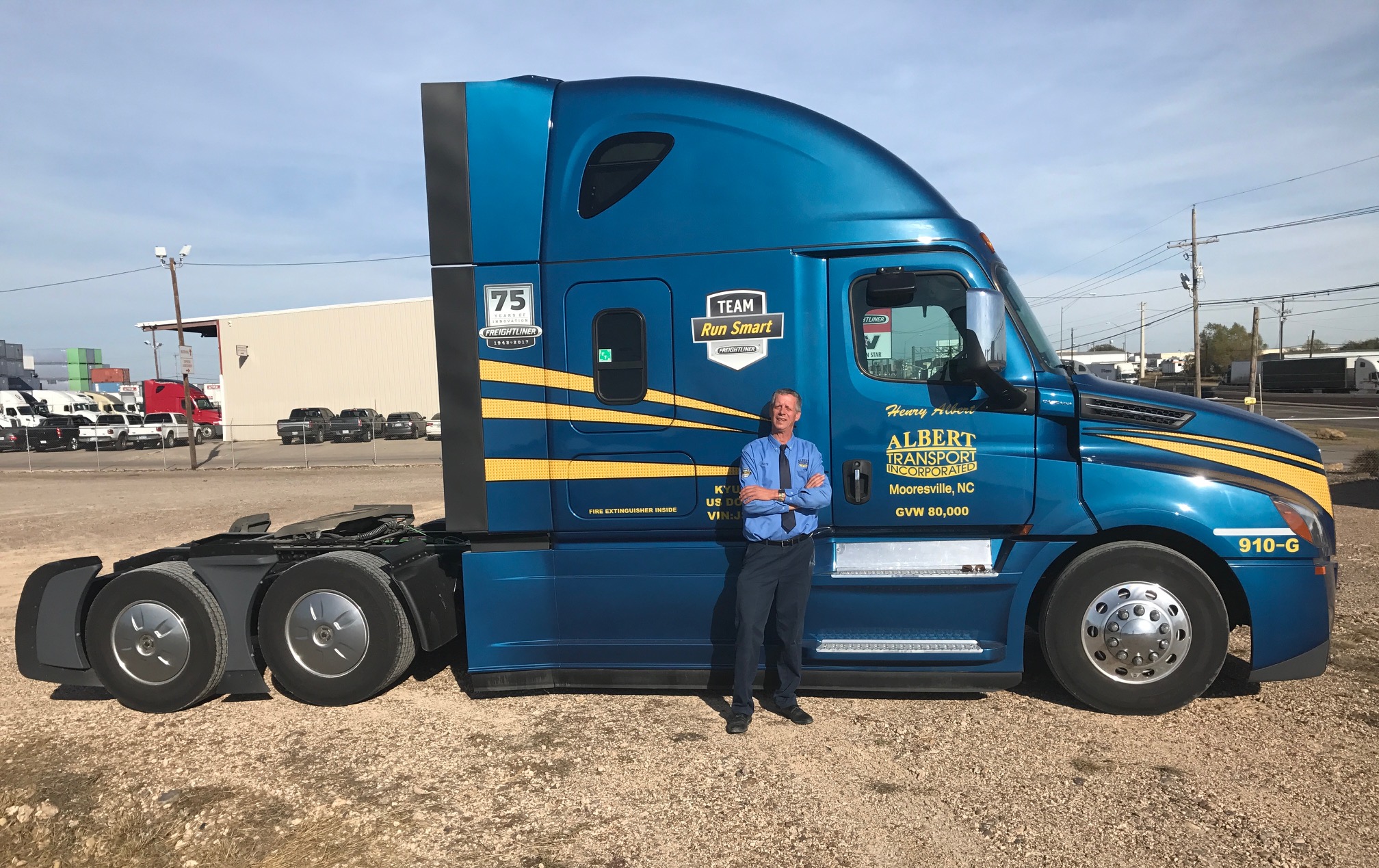.jpg.aspx?lang=en-US&width=500&height=314)
As many of you know, I have a racing background. Due to my racing background, I look at spec'ing out a truck in a very similar fashion to picking components for a race-winning automobile. Whether it’s racing a horse, or competing in a race car - no matter how good you are, you are limited to some extent by the horse you ride on, or the components that make up your car.
One of my choices is to run Michelin-wide-based single tires on my drive axles and trailer axles. There are many advantages that are often spoken about in regards to the fuel efficiency of a wide-based single tire. Of course, any time wide-based single tires come up in conversation, someone will mention the fact that if you get a flat, you’re finished. Next, you’ll often hear about how a damaged wheel might need to be replaced, should you get a flat at highway speed.
In my case, I run a tire monitor which informs me that I have a low tire, before the tire is damaged and/or disintegrating due to traveling at highway speed, without the necessary air pressure to carry the load. In addition to the tire pressure monitor, I also carry an air hose to be hooked to my trailer air brake line to fill any slow leaks, along with a professional tire plug kit to make a temporary repair - rather than be stranded alongside the roadway. But enough of all that! I want to talk about two areas that are never discussed in any of the articles or brochures regarding wide-based single tires, and that’s rotating weight and unsprung weight. Anyone with a racing background, whether it’s a bicycle, all the way up to a Formula One car, knows the effects of the weight on the performance of a vehicle. Two areas that racers concentrate on regarding weight, are the areas of rotating mass and unsprung weight, due to their significant impact on the vehicle's performance.
Let's tackle rotating weight first. A great deal of effort is put into a racing engine to lighten up the clutch, driveshaft, crankshaft, pistons, wheels, ring and pinion, and transmission assemblies. Weight is important. By reducing rotating weight, it makes it possible for the engine to accelerate or decelerate more rapidly, due to the lessened inertia required to accelerate or decelerate any of the rotating components within a race car.
Now, if you can reduce unsprung weight, it makes it easier to control the suspension's reaction to irregularities of the terrain. It must be understood what “unsprung weight” is. It’s any weight that’s hanging off of the spring and not the chassis. This includes half of the drive shaft, the rear axle housing in a live axle configuration, the breaks, hub components, wheels, and tires. Why is unsprung weight so important? Well, it’s all about control. The shock absorber on any vehicle controls the compression and rebound of the suspension components of a vehicle, not the chassis. The easiest way I know to explain this is by dribbling a basketball with your hand. At this point, your hand is performing the function of a shock absorber of a basketball. You’re able to control how hard the ball hits the surface, as well as control the force of the rebound when the ball reaches your hand once again. It’s possible to dribble a bowling ball that’s much heavier. However, due to the increased mass of the heavier ball, it requires much more energy to control its movement.
This is why I really like the benefits of the wide-based single tire. First, it has a lower rotating weight along with a lower unsprung weight. Losing weight in both of these areas, simultaneously, would get the attention of any racer. Racers go so far as to have inboard brakes attached to a center differential to reduce unsprung weight. Secondly, another item that is common to reduce rotating and unsprung weight at the same time, are gun-drilled axles. So as you can see, reducing weight in the two areas is important. Looking a the charts from the Michelin website, I came across some examples of the amount of weight that could be saved going from Low Pro 22.5 tires on aluminum wheels to wide-based singles on aluminum wheels. It’s a weight savings of about 796 lbs. To me, this is like attaching a 796 lb flywheel to the backside of our engine. This 796 lbs. not only gives you the ability to haul more payload if needed, but it also reduces the amount of inertia needed to be produced by the engine to accelerate. On the other side of this equation, it also reduces the energy required to reduce your vehicle's speed with the braking system.
So, as you can see, there are many advantages to using a wide-based single tire in regards to performance efficiency and ride quality. As with anything, there are drawbacks. But in my opinion, the simple addition to a tire pressure monitor, an air hose, and a tire plug repair kit can eliminate 99% of any of the drawbacks to running the wide-based tire. I have included a link to let you delve deeper into this subject. By the way, if you are on steel wheels with dual tires and go-to wide-based single tires on aluminum wheels, the savings is like 1,426 lbs. Can you imagine installing a 1,426 lb flywheel behind your engine??
https://business.michelinman.com/freight-transportation/x-one-tires/save-on-weight